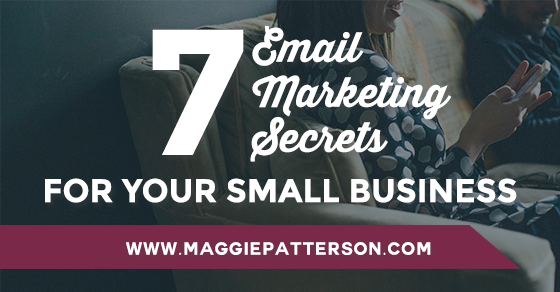
The whole idea of figuring out PR for small business probably seems crazy intimidating. This is something that comes up so many times within my community as people struggle to feel confident pitching the media or even with where to get started.
That feeling is normal. And I actually think makes you BETTER at doing PR in the first place. Let me explain.
Back when I was starting out doing media relations, while I knew the “rules” after studying PR, I was green. Greener than green. And scared as hell. Literally every time I had to email, or worse yet, call a reporter, I wanted to barf. This isn’t a good thing for a person who was hired to handle media relations on a full-time basis, because talking to the media was my job.
As I’d sit in my cube trying to psych myself up to actually make the call, I’d start to sweat and then I’d get a wretched feeling in my mouth that was all kinds of nasty. Eventually I’d have to play a game with myself. If I make the 5 calls, I can do or have X.
You may be wondering why I was such a basket case? Surely I had the skills and training for what I was doing…and believe me I did. The entire thing was a head trip because I watched my colleagues swagger up to the phone, bust through their list and just get it done.
Me. I would research, read and then assess the best approach. I’d figure out how to pitch the story the best possible way. All that over thinking it was paralyzing but once the call was made, it produced better results. I didn’t get hung up on or told to go eff myself, which was an all too common occurrence.
My nerves, lack of confidence and/or sheer ability to procrastinate via research to avoid speaking on the phone turned out to be a major asset. Instead of blowing the pitch, I was able to land the interview or coveted story in the magazine du jour. I was able to channel it all into results, which is what clients want from their firm handling media relations.
After that, I went on to work with bigger brands with bigger stories and way fewer opportunities to screw things up. Because when the media relations person for monolith computer giant drops the ball, the media remembers.
As a small business, you can learn a lot from watching how big brands roll, especially when it comes to PR and promotion:
#1. Tighten The Message
If you’ve ever pitched anything to anyone you understand the importance of not only nailing the message but having it so tight that there’s absolutely no fluff. When you’re working with the media, you literally have seconds to get your point across. Whether you’re pitching an idea to your local radio station or gearing up for an appearance on Good Morning America, your message should be tightened over and over again.
It may seem so basic, but big brands spend literally years and millions of dollars on seemingly simple messages. As a small business, you want to give your message the same time and attention the big players do.
If you’re not sure if it’s tight or simple enough, use what I call the grandma test. If you run this by your 87 year old grandma will she get the concept? It’s a good way to refine what you’re saying and get rid of jargon. Clear will always trump clever when it comes to working with the media.
[Tweet “Use the Grandma test for your messages says @magspatterson”]
#2. Don’t Put All Your Eggs in One Basket
One of the most common mistakes that small businesses make is focusing on only one type of PR outreach. The days of PR being all about just one tactic are long gone and you have a wide variety to choose from including media relations, guest blogging, speaking and social media.
It’s too easy to become focused on only tactic because we feel comfortable, but the reality is that by using only one way of promoting our business we’re missing out on so many other opportunities. Big Brands often make this look seamless, but months are spent every single year coordinating all the ins and outs of the PR plan from what types of media to work with, to how much to speak to what platforms to use. While you don’t have the big budget they’re working with, you definitely can steal their multi-channel strategy.
Focus on ensuring your promotion plan has at least two types of promotion going on at all times. This will enable you to engage different audiences and build further reach. Be willing to experiment as you go and see what’s working and what doesn’t the same way a big company with a big budget does. Be ruthless so you can focus where you see the most return on investment of time and money.
#3. Bring In The Pros
Yes, I know, I happen to be a professional who deals in PR, but hear me out. There’s a reason that big brand hire big PR agencies to handle their accounts for them. These companies could easily hire the talent they need to handle PR for them in house but yet they typically don’t. After working with these big budgets, I often wondered why – but it comes down to this – because a PR team that’s not in-house isn’t drinking the Kool-aid.
When you’re paying a firm a large monthly retainer, it’s their job to help you reduce risk and not waste time and money. Most of all, they are in the business of telling you the truth and delivering results. Which is why, even if your small business is going to DIY your PR efforts, getting a plan or input from someone who will give it to you straight can save you time, energy and mega frustration.
And isn’t that all we really want? Not to feel like we’re going to puke and to just get on with the business of promoting our small business?
[Tweet “3 PR secrets you can steal from big brands for your small biz with @magspatterson”]

Want more help with storytelling? And your content and promotion? Then my new offering The Cellar Club can help because we’ll get you feeling so much more confident about what to do, and when to do it.
It’s designed to fill the gap between total DIY and hiring out your marketing so you can stop being the queen of DIY, late nights and feeling like you spend all your time on marketing. It’s one part learning, one part implementation and lots of support.
Over three months we’ll cover storytelling, content strategy + content creation and then guest posting/securing interviews. You’ll go from where you are today to having a plan and actually implementing things without losing your mind.
Tomorrow is the absolute last day to sign up.


